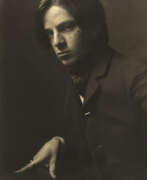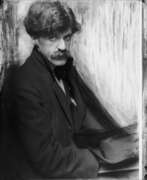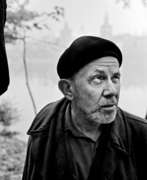Cityscape Pictorialist


Alvin Langdon Coburn was an American photographer and artist who was best known for his pioneering work in the field of pictorial photography. He was a member of the Photo-Secession movement, which was a group of photographers who sought to elevate photography to the status of fine art.
Coburn was born in Boston, Massachusetts, and grew up in England. He began taking photographs when he was just eight years old and later studied photography in New York City. He went on to become one of the leading photographers of his time, and his work was exhibited widely in Europe and the United States.
Coburn is perhaps best known for his innovative use of the "vortograph," a technique he developed in 1917 that involved photographing objects through a triangular arrangement of mirrors. The resulting images were highly abstract and geometric, and anticipated the work of many later artists, including the Surrealists.
In addition to his work in photography, Coburn was also an accomplished painter and printmaker. He continued to work as an artist throughout his life, and his work is now held in the collections of many major museums around the world.


Alfred Stieglitz was an American photographer and modern art promoter who was instrumental over his 50-year career in making photography an accepted art form. In addition to his photography, Stieglitz was known for the New York art galleries that he ran in the early part of the 20th century, where he introduced many avant-garde European artists to the U.S. He was married to painter Georgia O'Keeffe.


Josef Sudek was a Czech photographer known for his poetic images of Prague and its surroundings. He initially studied bookbinding before becoming interested in photography.
Sudek is known for his use of the large format camera, which allowed him to create highly detailed and nuanced images. He often photographed still lifes, landscapes, and architecture, but his most iconic images are his atmospheric images of Prague, which he captured over the course of several decades.
Sudek's photography is characterized by its emphasis on light, shadow, and texture, and his images often have a dreamlike or poetic quality. He also experimented with different printing techniques, including platinum printing, which gave his photographs a soft and velvety texture.
Despite facing numerous challenges throughout his life, including losing an arm in World War I and facing political persecution during the Communist regime in Czechoslovakia. Today, he is considered one of the most important photographers of the 20th century, and his work is held in major collections around the world, including the Museum of Modern Art in New York and the National Gallery in Prague.